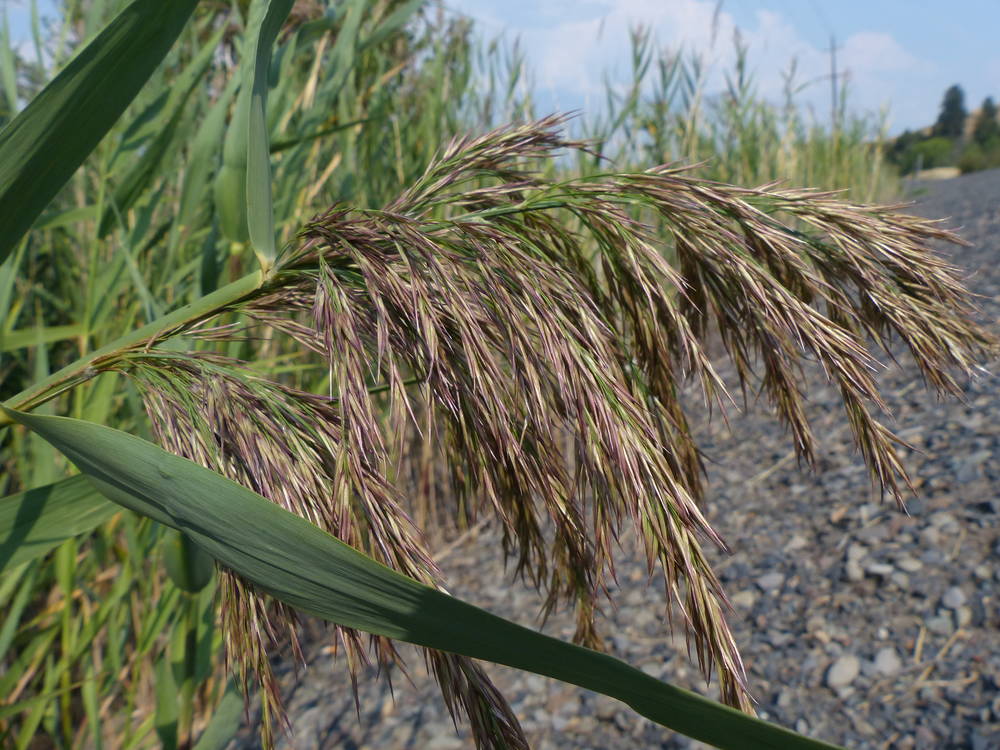
Plants perennial, 100–400 cm tall, forming dense stands from rhizomes.
Culms erect or ascending, 0.5–1.5 cm thick.
Leaves blades flat to folded, 15–40 cm × 20–40 mm, glabrous.
Inflorescences panicles plumose, ovoid or lanceoloid, 15–35 cm × 8–20 mm.
Spikelets 8–16 mm, with 2–10 florets; rachilla internodes with long, silky hairs.
Glumes lower glumes 3–7 mm, upper glumes (4)5–10 mm.
Lemmas linear, 8–15 mm, margins inrolled; tips long-acuminate, awnless.
Anthers 1.5–2 mm.
Caryopses 2–3 mm.
3 subspecies; 2 subspecies in Oregon.
as described under Phragmites australis
Culms 1-4 m tall, 0.5-1.5 cm thick, erect. Ligules about 1 mm; blades 15-40 cm long, 2-4 cm wide, long-acuminate, disarticulating from the sheath at maturity. Panicles 15-35 cm long, 8-20 cm wide, ovoid to lanceoloid, often purplish when young, straw-colored at maturity. Spikelets with 3-10 florets; rachilla hairs (4)6-10 mm. Lower glumes 3-7 mm; upper glumes (4)5-10 mm; lemmas 8-15 mm, glabrous, linear, margins somewhat inrolled, apices long-acuminate; paleas 3-4 mm, membranous; anthers 1.5-2 mm, purplish; styles persistent. Caryopses 2-3 mm, rarely maturing. 2n = 36, 42, 44, 46, 48, 49-54 (Connor et al. 1998), 72, 84, 96, 120.
Phragmites australis grows in wet or muddy ground along waterways, in saline or freshwater marshes, and in sloughs throughout North America. Its tall, leafy, often persistent culms and plumose panicles make it one of our easier species to recognize. In Florida, Neyraudia reynaudiana is sometimes mistaken for P. australis, but the former has glabrous internodes and pilose lemmas. There are three subspecies in North America north of Mexico, one of which is invasive. Phragmites australis is one of the most widely distributed flowering plants, growing in most temperate and tropical regions of the world, spreading quickly by rhizomes. Once established, it is difficult to eradicate. Its uses include thatching, lattices, arrow shafts, construction boards, mats, and erosion control, and it was used in the past to make cigarettes and superior pen quills.